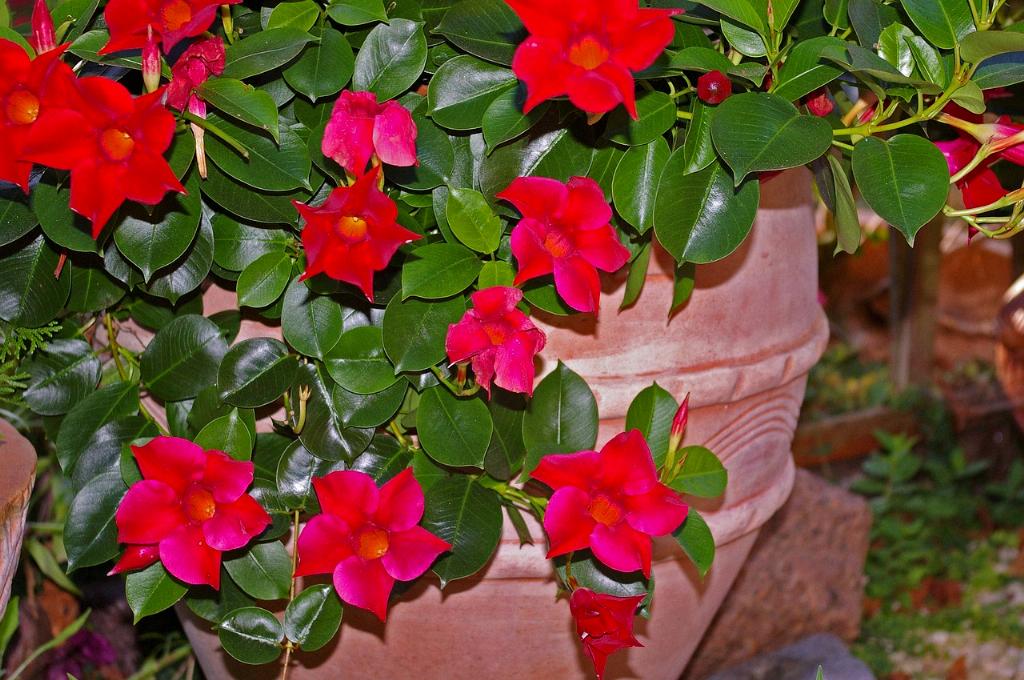When it comes to choosing plants for your garden, one of the key factors to consider is their resistance to common pests such as deer and rabbits. In this case, the mandevilla plant shines as a great option for those looking to add a touch of beauty to their outdoor space without having to worry about it becoming a snack for passing wildlife.
Reasons for Deer Resistance
One of the primary reasons why mandevilla plants are considered deer resistant is due to the presence of a thick, milky sap that flows through their stems and leaves. This sap serves as a natural deterrent for deer and rabbits, making these plants less appealing to these animals compared to other more succulent options.
Milky Sap as a Defense Mechanism
The milky sap found in mandevilla plants is not only responsible for their deer resistance but also serves as a defense mechanism against pests and diseases. This sap contains compounds that are unpalatable to deer and can cause irritation if ingested, further discouraging these animals from feeding on the plant.
Physical Characteristics
Aside from their milky sap, mandevilla plants also possess physical characteristics that contribute to their deer resistance. Their woody stems and glossy leaves make them less desirable for browsing animals, as they offer a tougher texture that is not as appealing compared to softer vegetation.
Low Maintenance Option
For gardeners looking for low maintenance options that can thrive in various conditions while deterring unwanted wildlife, mandevilla plants are an excellent choice. Their natural defenses make them a hassle-free addition to your garden, allowing you to enjoy their beauty without constantly worrying about deer damage.
Landscape Versatility
Another advantage of mandevilla plants is their versatility in landscaping. Whether used as climbing vines, container plants, or in hanging baskets, these flowers can brighten up any outdoor space while providing a reliable barrier against deer and rabbit interference.
Seasonal Appeal
With their vibrant blooms and lush foliage, mandevilla plants add a burst of color to your garden during the summer months. Their ability to thrive in warm weather conditions makes them a popular choice for outdoor settings, where they can attract pollinators while repelling potential pests.
Container Planting
If you’re limited on garden space or looking to create a movable display, mandevilla plants are well-suited for container planting. This not only allows you to showcase their beauty in different areas of your yard but also provides an extra layer of protection against deer due to the elevated positioning.
Thriving in Sunlight
As sun-loving plants, mandevilla thrives in bright, sunny locations where they can receive ample light to support their growth and flowering. By strategically placing these plants in sun-drenched spots, you can enhance their deer resistance while ensuring they reach their full potential in terms of health and vigor.
Enhancing Your Outdoor Space
By incorporating mandevilla plants into your garden design, you not only benefit from their deer resistance but also elevate the aesthetic appeal of your outdoor space. Their showy flowers and lush foliage create a picturesque backdrop that invites admiration from both humans and pollinators alike.
Long-Term Investment
Considering the durability and resilience of mandevilla plants, choosing them for your garden can be seen as a long-term investment. With proper care and maintenance, these plants can continue to thrive year after year, providing you with a reliable source of beauty and deer-resistant greenery.

Final Thoughts
In conclusion, if you’re seeking a decorative plant that offers both visual appeal and deer resistance, mandevilla is a top contender. With its natural defenses, low maintenance requirements, and versatile uses in landscaping, this plant can be a valuable addition to any garden setting, allowing you to enjoy a beautiful and pest-free outdoor environment throughout the seasons.
